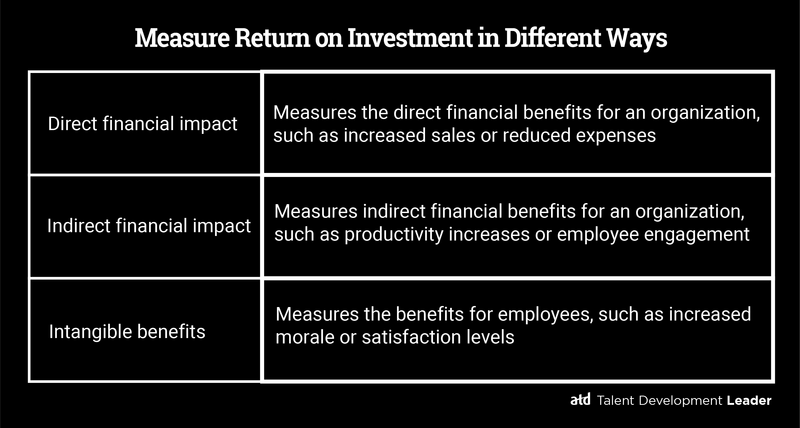Talent Development Leader
Recession Proofing Talent Development
Protect your team and help contribute to the organization’s success—no matter what economic curveballs come your way.
Tue Jul 18 2023

Protect your team and help contribute to the organization’s success—no matter what economic curveballs come your way.
In the harsh reality of economic tough times, businesses start looking for ways to cut costs. Unfortunately, internal resources identified as cost centers (not revenue generating) are often the first that companies downsize. The L&D function faces a tough challenge when budgets shrink. Such short-term budget cuts have long-term effects on employee engagement, morale, productivity, and retention.
To recession-proof L&D, start by understanding your organization’s business goals and objectives and then tailoring current L&D programs to align with them. A Hoshin planning or strategy deployment matrix can be quite useful.
Calculate ROI
Return on investment demonstrates L&D’s worth within an organization when the L&D function demonstrates an impressive return. Often that helps with future buy-versus-build cost-cutting discussions.
To accurately gauge ROI, collect data prior to and following a program. L&D programs offer tremendous value to an organization through evidence collected during program implementation and delivery.

After collecting data for analysis, you can use one of various formulas and methodologies to calculate a program’s ROI. One such formula is:

Gain on investment refers to how much money an L&D program generated. Cost of investment refers to total program expenses including facilitator fees and associated costs.
Communicate L&D’s value to stakeholders
When it’s time to communicate the value of your programs, show the C-suite what you have.
Think like a businessperson. Organize your thoughts into a concise report. Focus on the most important information and use visuals and graphics to help convey your message. Have an operations colleague review the report to ensure it looks like others submitted to the executive team. Send your report to executives prior to the meeting.
Start with the problem. Clearly state the problem that you’re trying to solve, such as the need to recession-proof the L&D department or the potential negative effect of cutting L&D programs.
Demonstrate influence. Use data and real-world examples to show the impact of L&D programs on the organization, such as increased productivity, employee retention, and revenue growth.
Provide solutions. Present specific solutions to the problem, such as using technology to reduce costs and partnering with external providers for specialized training.
Address objections. Anticipate objections from the C-suite and address them in your presentation or report.
Highlight ROI. Show, using data and metrics, the ROI of L&D programs, including the financial impact as well as the effect on engagement and retention.
Focus on the future. Illustrate how investing in L&D programs will benefit the organization in the long term.
Several business tools enable you to help create a strong argument for keeping L&D initiatives:
Cost-benefit analyses help make a case for the value of your programs and demonstrate how the benefits outweigh the costs.
Surveys and feedback forms demonstrate programs’ impact and enable the L&D team to make improvements based on feedback from participants.
Case studies, via data and examples from previous initiatives, showcase the positive impact of the programs.
Benchmarking involves comparing the performance of your L&D initiatives with industry standards or best practices. That can help you identify areas for improvement and demonstrate the value of your programs compared with others in the industry.
Business impact analyses demonstrate the potential negative effect of eliminating programs by assessing how such cuts would potentially affect the organization’s bottom line.
Although all the above strategies can be time consuming, there are several strategies you can implement today, tomorrow, and long term to protect your L&D department.
Business Impact Areas of Analysis****Productivity: The potential impact of a reduction in L&D programs on employee productivity and the organization’s ability to achieve its business goals
Employee morale and engagement: The potential impact of cutting L&D programs on employee morale and engagement as well as the potential consequences for employee retention and turnover
Business continuity: The potential impact of reduced L&D programs on the organization’s ability to continue operations in the event of unexpected disruptions or changes
Compliance: The potential impact of reduced L&D programs on the organization’s ability to comply with legal and regulatory requirements as well as the potential consequences for legal and financial liabilities
Reputation: The potential impact of reduced L&D programs on the organization’s reputation, brand, and image as well as the potential consequences for customer and stakeholder perceptions
Innovation: The potential impact of reduced L&D programs on the organization’s ability to innovate, develop new products and services, and remain competitive in the marketplace
**
Strategies for today
**You can enact these ideas for your team right away.
Reuse existing materials. Repurposing training materials is an efficient and economical way to reduce costs and time investment in creating new programs. Consider modifying existing videos or presentations to meet organizational requirements more precisely.
Get Agile. Agile methodologies offer a means of creating programs that are flexible, adaptive, and responsive to changing business requirements, giving you more opportunities to quickly respond and keep current with business environments.
Communicate progress through business metrics. To gain executive support, share status updates and results via business metrics.
**
Near-term strategies
**You can enact these ideas in the near future.
Raise the concept of ROI in discussions with stakeholders, emphasizing financial value of programs and initiatives.
Incorporate ROI calculations into the design phase. A common misstep is to wait until the end to calculate the ROI. Know what your executive team’s goals are and work toward achieving them. If, during the design phase, the expected ROI does not meet the executive team’s expectations, don’t panic. That is a signal to be vigilant in your data collection for the business metrics (identified in your strategy deployment matrix).
Find innovative ways to connect employees with the company’s mission, vision, and strategy.
Long-term strategies
You can plan into the future with these ideas.
Search for technology that is simple to deploy and scale. The L&D function needs solutions that reduce expenses while increasing effectiveness. For instance, learning management systems can automate administrative duties while serving as an accessible central platform to deliver and track training sessions.
Use virtual and hybrid solutions. Online learning platforms offer significant cost reduction and efficiency gains while expanding reach.
Foster an environment conducive to learning. Promoting a growth mindset and continuous education provides employees with the knowledge and abilities necessary to move the organization forward.
Protect L&D
While economic challenges may create pressure for companies to cut costs, investing in employee development is not only an essential part of maintaining a happy, engaged, and productive workforce but also a key ingredient to long-term business success.
By building a strong business case for L&D, communicating its value to stakeholders, and developing innovative strategies to reduce costs and increase efficiency, the L&D function can survive (and even thrive) during difficult times.
Read more from Talent Development Leader.
You've Reached ATD Member-only Content
Become an ATD member to continue
Already a member?Sign In
